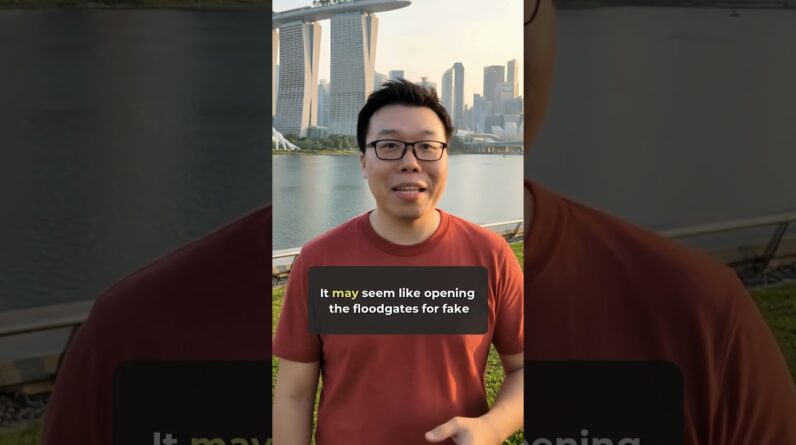
In the vast world of website design and optimization, a term that often comes up is “sitemap.” But what exactly is a sitemap and why is it so crucial for your website’s success? Simply put, a sitemap is a file that lists and provides information about the pages on your website, acting as a roadmap for search engines. While it may seem like a technicality, having a well-structured and up-to-date sitemap can greatly improve your website’s visibility, indexing, and overall search engine optimization (SEO) performance. So, whether you’re a seasoned web developer or just starting out, understanding the significance of a sitemap is essential for the success of your online presence.
What is a sitemap?
A sitemap is a file that lists all the pages of a website, designed to guide search engine crawlers and users in navigating the site. It serves as a roadmap for search engines, providing information on the organization and structure of a website’s content. By creating a sitemap, you are effectively telling search engines which pages are available for crawling and indexing.
Importance of sitemaps
Enhanced crawlability
When it comes to improving your website’s visibility in search engine results, crawlability plays a crucial role. A sitemap helps search engine crawlers to easily discover and index all the pages on your website. By providing a clear structure and hierarchy of your content, you are giving search engines a roadmap that allows them to navigate and understand your site more efficiently.
Better user experience
A well-organized sitemap not only benefits search engines but also enhances the user experience. By providing a clear and logical structure, users can easily find the information they are looking for without getting lost or frustrated. The inclusion of a sitemap on your website ensures that both search engine crawlers and visitors can effortlessly navigate through your content, improving overall user satisfaction.
Improved navigation
Websites with a large number of pages or complex structures can sometimes pose challenges for users to navigate. A sitemap acts as a table of contents for your website, making it easier for visitors to navigate through your content and find what they are looking for. By including links to all your important pages, users can quickly jump to the desired sections, saving time and effort.
Increased search engine visibility
Search engine optimization (SEO) is essential for gaining visibility and attracting organic traffic to your website. A sitemap plays a significant role in SEO by helping search engines understand the content and structure of your website. When search engines can easily crawl and index your pages, it increases the chances of your site appearing in relevant search results, driving more organic traffic to your site.
Facilitates website hierarchy organization
A well-structured website hierarchy is essential for organizing and categorizing your content. A sitemap allows you to clearly define the relationships between different pages and sections of your website, creating a logical hierarchy. This not only helps search engines understand the relevance and importance of each page but also assists visitors in exploring your content in a more organized manner.
1. Definition
A sitemap is a file that provides search engines and users with a blueprint of a website’s content, outlining the organization and structure of its pages.
2. Types of sitemaps
There are various types of sitemaps that serve different purposes and cater to specific types of content. Let’s take a closer look at each type:
2.1 XML sitemaps
XML sitemaps are specifically designed for search engines, providing them with crucial information about your website’s URLs and how they are related. XML sitemaps can include various metadata such as last modified dates, priority levels, and how frequently the page is updated. This gives search engines valuable insights into the importance and relevance of each URL.
2.2 HTML sitemaps
HTML sitemaps are created with the user in mind, offering a visual representation of your website’s structure. These are typically designed for human visitors and present a hierarchical view of all the pages on a website. HTML sitemaps are often placed in the footer or sidebar of a website and act as a quick reference guide for visitors to navigate through the site.
2.3 Image sitemaps
Image sitemaps are specifically designed to help search engines discover and index images on your website. By providing metadata about each image, such as its URL, caption, title, and license information, you can enhance the visibility of your images in image search results.
2.4 Video sitemaps
Video sitemaps are specialized sitemaps that help search engines understand and index video content on your website. By including important metadata such as video duration, description, thumbnail URL, and video player URL, you can improve the chances of your videos appearing in video search results.
2.5 News sitemaps
If your website publishes news articles or press releases, a news sitemap can be beneficial. News sitemaps provide search engines with specific information about newsworthy content on your site, such as publication dates, keywords, and genres. This helps search engines categorize and display your news content in relevant search results.
2.1 XML sitemaps
Purpose
XML sitemaps serve the crucial function of providing search engines with a comprehensive list of URLs and related metadata. They help search engines efficiently crawl and index your website, improving its visibility in search results.
Structure
A typical XML sitemap consists of a root element “
Benefits
XML sitemaps offer several benefits, including improved crawlability, increased search engine visibility, and better indexation of your website’s pages. When search engines can easily navigate through your XML sitemap, they are more likely to discover and index all the relevant pages on your site.
2.2 HTML sitemaps
Purpose
HTML sitemaps are primarily designed for human visitors, providing a user-friendly overview of your website’s structure. They serve as a quick reference guide for users to navigate to specific pages or sections of your site.
Structure
An HTML sitemap is usually presented as a hierarchical list of links, organized in a way that reflects the structure of your website. It can be placed on a dedicated HTML page or integrated into the footer or sidebar of your website for easy access.
Benefits
Including an HTML sitemap on your website enhances user experience by providing visitors with an alternative navigation option. When users can easily find the content they are looking for, they are more likely to stay engaged and explore more of your site.
2.3 Image sitemaps
Purpose
Image sitemaps are specifically designed to help search engines discover and index images on your website. By providing metadata about each image, you can enhance the visibility of your images in search results.
Structure
An image sitemap consists of a root element “
Benefits
By including an image sitemap on your website, you increase the chances of your images appearing in image search results. This can drive additional traffic to your site and help showcase your visual content to a wider audience.
2.4 Video sitemaps
Purpose
Video sitemaps help search engines discover and index video content on your website. By providing metadata about each video, you can enhance the visibility of your videos in search results.
Structure
Similar to XML and image sitemaps, video sitemaps consist of a root element “
Benefits
By using video sitemaps, you can ensure that search engines fully understand the video content on your website. This can lead to increased visibility of your videos in search results, attracting more engaged users and potentially driving more traffic to your site.
2.5 News sitemaps
Purpose
News sitemaps help search engines categorize and display news-related content from your website in relevant search results. If your website publishes news articles or press releases, a news sitemap can be extremely beneficial.
Structure
A news sitemap is structured similarly to other sitemaps, with a root element “
Benefits
Including a news sitemap on your website helps search engines recognize and classify your news content, making it more likely to appear in relevant news search results. This can increase the visibility of your website’s news-related content and attract a wider audience.
4.5 Facilitates website hierarchy organization
In addition to the benefits mentioned earlier, one of the key advantages of using a sitemap is its ability to facilitate website hierarchy organization. By defining the relationships between different pages and sections, a sitemap helps establish a logical and intuitive structure. This not only assists search engines in understanding the importance and relevance of each page but also helps visitors navigate through your content more easily.
In conclusion, a sitemap is a crucial component of a well-optimized website. It not only helps search engines efficiently crawl and index your pages but also improves the user experience by providing a clear navigation structure. By utilizing different types of sitemaps and tailoring them to your specific content, you can enhance your website’s visibility, attract more organic traffic, and create a more organized and user-friendly online presence. So, make sure to include a sitemap on your website and enjoy the benefits it brings.






